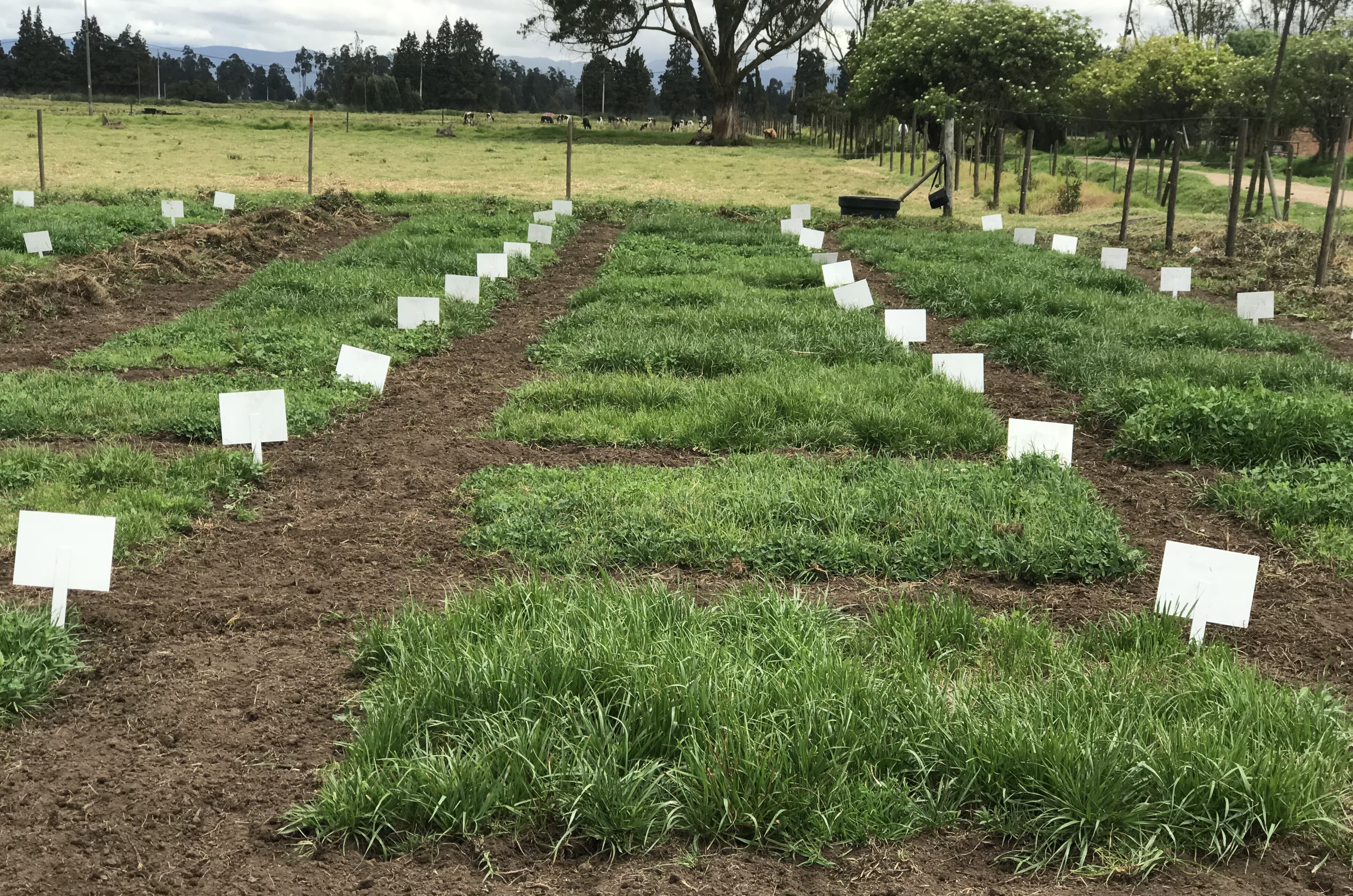Effect of nitrogen and phosphate fertilization on perennial ryegrasses and red clovers
Evaluation of nitrogen and phosphate fertilization on perennial ryegrasses and red clovers
DOI:
https://doi.org/10.15517/am.v30i3.35170Keywords:
forages, feed grasses, legumes, pastures, grasslandAbstract
Introduction. Specialized dairy systems are forage based, which makes necessary to generate recommendations that promote the efficient and sustainable use of this resource. Objective. The objective of this work was to evaluate increasing levels of nitrogen and phosphate fertilization on forage yield and compositional quality of ryegrass (Lolium perenne) and red clovers (Trifolium repens). Materials and methods. In September 2016, two perennial ryegrasses plots and two red clovers were established in two Colombian departments (Boyacá and Cundinamarca), in 4 m2. The first one received 0, 50, 100 or 150 kg N ha-1; and 0, 25 or 50 kg P2O5 ha-1; and the second one received 0, 12.5, 25 or 37.5 P2O5 ha-1. After the establishment period (120 days) and a uniform cut, forages were harvested at 21, 35 and 49 regrowth days, during two evaluation periods (April-May and June-July 2017). The variables were evaluated through a split-plot design with repeated measures. Results. Nitrogen fertilization increased (p<0.05) dry matter yield, chlorophyll and crude protein concentration; and decreased neutral detergent fiber. Phosphatic fertilization did not modify (p>0.05) ryegrass and clover yield and composition. Furthermore, the extension in the age of regrowth increased (p<0.05) the concentration of components less soluble in clovers and ryegrass, which are related to the lower nutritional value. Conclusion. The application of increasing levels of nitrogen, but not phosphorus, elevated the production and quality of ryegrasses. Phosphorus application did not modify clovers yield nor composition.
Downloads

Downloads
Additional Files
Published
How to Cite
Issue
Section
License
1. Proposed policy for open access journals
Authors who publish in this journal accept the following conditions:
a. Authors retain the copyright and assign to the journal the right to the first publication, with the work registered under the attribution, non-commercial and no-derivative license from Creative Commons, which allows third parties to use what has been published as long as they mention the authorship of the work and upon first publication in this journal, the work may not be used for commercial purposes and the publications may not be used to remix, transform or create another work.
b. Authors may enter into additional independent contractual arrangements for the non-exclusive distribution of the version of the article published in this journal (e.g., including it in an institutional repository or publishing it in a book) provided that they clearly indicate that the work was first published in this journal.
c. Authors are permitted and encouraged to publish their work on the Internet (e.g. on institutional or personal pages) before and during the review and publication process, as it may lead to productive exchanges and faster and wider dissemination of published work (see The Effect of Open Access).



























